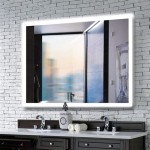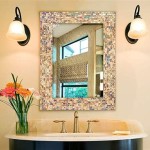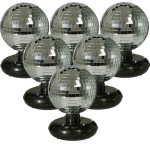Screen Mirroring iPhone to Macbook Air Without Wi-Fi
Screen mirroring an iPhone to a Macbook Air offers a convenient way to share content, presentations, or gameplay on a larger screen. While Wi-Fi is the typical method for screen mirroring, several alternative approaches allow for this functionality without relying on a wireless network connection. This article explores these methods, explaining their advantages and limitations.
Using a USB Cable and QuickTime Player
One of the most reliable methods for mirroring an iPhone to a Macbook Air without Wi-Fi involves a simple USB cable and QuickTime Player. This approach utilizes the wired connection for data transfer, eliminating the need for a wireless network and offering a stable, low-latency mirroring experience.
The steps involved are straightforward:
* Connect the iPhone to the Macbook Air using a Lightning to USB cable. * Open QuickTime Player on the Macbook Air. * Select "New Movie Recording" from the File menu. * Click the dropdown arrow next to the record button. * Select the connected iPhone as the camera and microphone source. * The iPhone's screen will then be mirrored on the Macbook Air.Leveraging USB Dongles and Third-Party Apps
Another viable option for screen mirroring without Wi-Fi involves using specialized USB dongles and accompanying third-party applications. These dongles typically connect to the Macbook Air's USB port and create a direct connection with the iPhone. The third-party software facilitates the mirroring process, often offering additional features such as recording and streaming options.
Key aspects of this method include:
* Requires purchasing a compatible USB dongle. * Often involves installing and configuring third-party software. * May offer features beyond basic screen mirroring, such as recording or streaming. * Performance can vary depending on the specific dongle and software used. * Provides a direct connection, bypassing the need for a wireless network.Peer-to-Peer AirPlay with Bluetooth
While AirPlay typically relies on Wi-Fi, it can be configured to operate in a peer-to-peer mode using Bluetooth. This method creates a direct wireless connection between the iPhone and Macbook Air without the need for an existing Wi-Fi network. However, it's important to note that this method is not officially supported by Apple and may have limitations in terms of performance and stability. Furthermore, this method only works for specific functionalities like music playback and may not work for full screen mirroring.
Considerations for peer-to-peer AirPlay:
* Not officially supported by Apple. * Limited functionality; screen mirroring may not be fully supported. * Performance can be less stable compared to Wi-Fi or wired connections. * Primarily intended for audio streaming.Creating a Local Hotspot
While seemingly counterintuitive, creating a local hotspot on the iPhone can facilitate screen mirroring to the Macbook Air without requiring an external Wi-Fi network. In this scenario, the iPhone acts as a portable router, creating its own Wi-Fi network to which the Macbook Air can connect. Once connected, standard AirPlay mirroring can be utilized.
Steps for using a local hotspot:
* Enable Personal Hotspot in the iPhone's settings. * Connect the Macbook Air to the newly created Wi-Fi network. * Use AirPlay on the Macbook Air to mirror the iPhone's screen.Using a Wired Network Connection
While often overlooked, a wired network connection can facilitate screen mirroring if a Wi-Fi network isn't available. By connecting both the iPhone and Macbook Air to the same wired network via Ethernet adapters, AirPlay functionality can be utilized. This approach provides a stable and reliable connection, avoiding the potential instability of wireless networks.
Details regarding wired network connections:
* Requires Ethernet adapters for both devices. * Provides a stable, reliable connection. * Suitable for environments lacking Wi-Fi access.Comparing the Different Methods
Each method for screen mirroring an iPhone to a Macbook Air without Wi-Fi presents distinct advantages and disadvantages. The USB cable and QuickTime Player method offers simplicity and reliability. USB dongles and third-party apps may provide additional features but involve extra cost and setup. Peer-to-peer AirPlay via Bluetooth is a less reliable option with limited functionality. Creating a local hotspot adds complexity but leverages standard AirPlay functionality. Lastly, a wired network connection offers stability but requires appropriate adapters and network infrastructure.
Choosing the optimal method depends on individual needs and circumstances. Factors to consider include the required level of performance, the availability of accessories, and the desired level of convenience.

How To Mirror Iphone Mac Without Wi Fi

How To Mirror Iphone Mac Without Wi Fi

How To Mirror Iphone Mac Wirelessly Full Guide

How To Mirror Iphone Mac Without Wi Fi

4 Ways How To Mirror Iphone Mac Without Wifi Airdroid

How To Mirror Iphone Mac Wirelessly Full Guide

How To Mirror Iphone Mac Without Wi Fi

How To Mirror Iphone Mac Without Wi Fi

How To Mirror Iphone Display Macbook Ios 12 Macos Mojave

4 Ways How To Mirror Iphone Mac Without Wifi Airdroid








